One of the most familiar heralds that winter is coming or going can be found in the sky. That living delta of birds migrating to temperate grounds has become so iconic, adults immediately get their hunting gear at the sound of honking while children watch the migration in wonder. But what happens when those flocks need a rest?
Geese (and their kin ducks) make frequent rest stops on their thousands of miles route near bodies of water to rest and refuel. Unfortunately, this rest stop might be your yard, and that means a whole slew of potential problems. Knowing how to get rid of geese (and keep them away) is easier once you understand more about them.
Getting to Know Geese
Geese are among 150 species of waterfowl in the order Anseriformes and are more specifically from the subfamily Anserinae alongside swans. They hail from two genera based upon primary coloration: Anser (grey and white, the latter of which was formerly the genus Chen) and Branta (black). Their distinctive honk sets them apart from their two closest relatives, ducks and swans. They are also one of the major food birds.
Why We Love Geese
Geese are very symbolic, as they mate for life and a male will die to protect his spouse. Thus, they are signs of loyalty and caring. They are also a food staple that is often served on major holidays.
Many species have been domesticated, and people of all ages enjoy throwing bread or other foods to watch them eat. As a general rule, geese are also very placid and won’t attack unless a female or gosling is threatened.
Goose Habitat
Geese are migratory, but being a species of waterfowl, they actually spend the majority of their time on the ground. Their preferred residence is any decently sized grassland near a reliable water source.
Thus, homes with a lawn beside a stream, pond, or lake can be prime territory, as well as larger homes that have a built-in swimming pool.
Why Do Geese Migrate?
Geese spend the majority of their days grazing. When the weather starts to get too cold for grass, the geese will take flight and migrate south to where there’s more food. Once the winter ends, the gangs will return to their homeland to nest.
You can thus tell the season simply by hearing a gang of Canadian geese (Branta canadensis) fly overhead and noting their direction, even if you can’t feel a change in the weather.
The Scoop on Goose Poop
One of the biggest issues with geese hanging out in your yard is their infamous geese droppings. If you thought pigeon poop was bad, geese take it to another level. This greasy goose goo is so slimy it only takes a handful of adult geese to quickly turn your well-manicured lawn into a muddy Slip ‘N Slide. It can ruin plants and may contain harmful parasites, virii, or diseases. These include:
- Avian Flu – This influenza variant has some notoriety for resisting flu vaccines and can infect both domestic and wild birds as well as humans. As with other forms of influenza, bird flu is no longer dangerous to healthy individuals but still poses some risk for younger children, the elderly, and those with a compromised immune system.
- Cercarial dermatitis – Caused by an allergy to microscopic parasites which live in the bloodstream of critters that live by water, this rash can cause discomfort for several days and is often known as swimmer’s itch.
- Cryptosporidiosis – A nasty infection caused by the cryptosporidium parasite, this ailment can cause a range of annoying symptoms such as cramps, diarrhea, fever, nausea, vomiting, and weight loss. While it often goes away on its own, this condition has proven fatal in a few extreme cases.
- E-coli – This generally harmless bacteria has often been painted as a deadly threat to all kitchens. In truth, Escherichia coli bacteria mainly affects those with a compromised immune system. Some stronger strains may cause cramps, diarrhea, nausea, or vomiting. In cases where the immune system is too weak to destroy the bacteria, it can lead to hemolytic uremic syndrome, which is a dangerous type of kidney failure.
Other Goose Problems
Beyond soiling your lawn in ways you’d prefer they didn’t, geese can pose a couple other problems.
Aggressive Behavior
While geese are docile on their own, they can become incredibly aggressive when they believe their young are in danger. This can lead to your two or four legged family members being injured, even if no harm was intended to the goslings.
Noise
Their loud nasal honking is bad enough when one’s around, but a gang of geese serenading under your window is enough to keep even the soundest sleeper awake.
Property Damage
In addition to the acidic damage caused by their droppings, geese are avid grazers. By the time they move on, your prized lawn may look more like a barren mud pit.
See Also: How to Get Rid of Barn Swallows
Goose vs Duck
Geese are among the larger waterfowl and have a distinctive loud honking which sets them apart from most of their kin (swans also have a sort of honk referred to as a whoop that more often resembles a chicken). They’re strictly vegetarian and have full webbing between the toes.
The nostrils of a goose are set low on the beak, and the Canadian goose is perhaps the most common breed depicted worldwide.
Ducks are much smaller in size and have a distinctive quack. Their toes have less webbing and their nostrils sit high on the beak.
When not busy selling insurance, ducks are non-migratory and love fish, amphibians, and insects in their diet. The mallard, with its distinctive green neck and head, is perhaps the most iconic species of wild duck.
How to Get Rid of Geese
Unlike most other pests, getting rid of a gang of geese can be a simple matter of scaring them away. Trapping or killing a goose may be illegal or require a special permit. Be sure to check up on local and state regulations before attempting either of those methods. Meanwhile, let’s look at some of the ways to scare geese away.
Getting Rid of a Single Goose
Taking care of one stray goose is a fairly straightforward matter. The old fashioned way is to simply catch it by the neck (never by the feet!) with your hand (or catching hook). Then, use your other arm and wrap it around its body and place the goose close to the side of your body. But there’s an easier way.
Geese, like most birds, will become more docile when blinded. You can make a simple homemade net by making a loop out of thick wire and attaching it to a broom handle. Add a pillowcase to the hoop, and you have an instant net to snag your invader from a safe distance.
If you feel a little more brave (or MacGuyver isn’t your patron saint), you can still catch a goose using the single most important item known to Man – a towel. Providing you’re a hoopy frood, you can simply take your towel and gently approach the goose.
It will rear up, flap its wings, and honk if it’s about to attack, so don’t panic and take your time. Once close enough, toss your towel over its head and you can safely usher it somewhere that isn’t your home.
What are Geese Afraid of? Dealing with Gangs
It might be easier to explain what doesn’t scare them. Geese have a wide range of natural enemies, so predator decoys and repellents work extremely well. Loud noises or sudden lights can also trick them into thinking a hunter is nearby. In fact, most sudden changes in environment can spook a goose.
Nesting Geese
An air horn or firing a hunting rifle is generally enough to scare off nesters. The downside is that the gander will selflessly stand guard over the nest while the goose and goslings escape. In this case, you may need to trap the ganders to remove them.
Getting Rid of a Gang Stopover
Sudden loud noises, flashing lights, and reflective balloons – yes, balloons – can scare off a gang in most cases. The geese see these shiny visual deterrents as a potential threat and will evacuate rather than risk attack.
Again, be wary of ganders when goslings are present, but a migrating group won’t be nesting and therefore the ganders won’t stick around once the kids are safe.
The Joys (and Sorrows) of Hunting Season
There’s one point where killing geese is sometimes legal, and that’s bird hunting season. Federal law has more strict rules regarding waterfowl hunting than other migratory birds. You will also need to check your state laws, which may or may not permit waterfowl hunting on their permits.
Make sure you understand these complex hunting laws and are in compliance. If so, you can keep geese away while potentially getting a free dinner.
How to Keep Geese Away
What’s better than getting rid of a gang of noisy geese? Not having them drop by in the first place! There are many easy ways to keep these birds from invading your property. Here are some of the most common ones:
Decoys
These are an easy way to make a gang pass you by. No decent parent wants to put their children in danger, and the mere sight of a potential predator can be enough. There are a few great types of decoy, but three of the most common ones are:
Coyote Decoy
Just as owl decoys do a good job of keeping away hawks and other birds, a coyote decoy works well against geese. Those stories of coyotes getting into the chicken coop have spread among birds, leaving a fowl reputation. Realistic decoys, such as the one offered by Flambeau make for attractive lawn ornaments that will chase away numerous pests including geese.
Be warned that leaving the coyote in one place for too long will allow the geese to figure out it’s harmless. Move it around every few days or adjust the pose (when available) to keep the illusion going.
Dog Decoy
Much like coyotes, dogs immediately tell geese that someone’s playing live action Duck Hunt. Realistic statues of dogs can also make for lovely ornamentation. Again, you’ll have to shift them occasionally to give the illusion of life. The Lone Dog Decoy is a popular model as it uses a spring to make it appear like it’s moving.
Swan Decoy
This is the great water nemesis. Swans and geese don’t get along very well, and a floating swan decoy such as the Pond H20 can signal danger for any goslings in the group. What’s nice about a swan decoy is the fact that it floats, so you don’t have to move it about manually to give the appearance of motion. They’re also an absolute joy to look at.
Fences
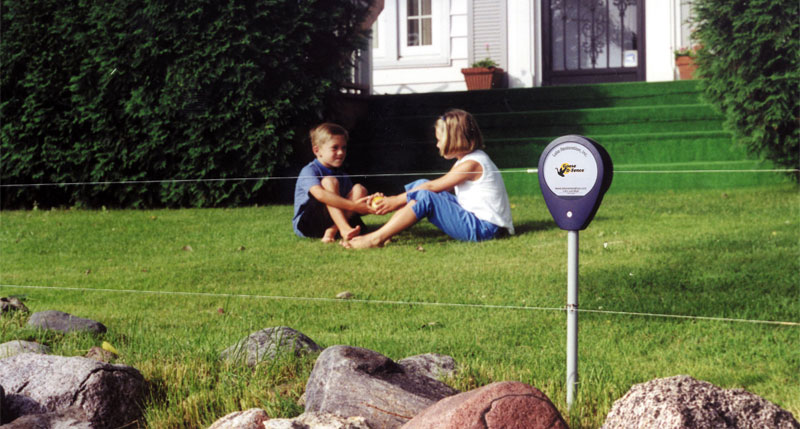
One of the best ways to keep geese off your lawn is a fence. A bulky permanent fence isn’t necessary for these critters, however. Sometimes a simple line is enough to keep them from getting in the yard.
For example, Goose D-Fence is a non-intrusive, retractable line fence that you can put up or take down in minutes. Despite being only a single line the thickness of fishing wire, geese will avoid it because the light glinting off of the line suggests something unnatural.
BriteNway is another great example of a non-intrusive barrier. This roll of reflective material can be hung from trees or stretched across open spaces to scare off a wide range of feathered critters. You can also hang these across bodies of water to help keep geese away from your pond or swimming pool.
Goose Repellent
As with most critters, a simple repellent can often be enough to stave off a gang of geese. This option is ideal for keeping them away from golf courses or other areas where fences and decoys are less effective.
Try to aim for an all-natural liquid goose repellent such as Avian Migrate to ensure you won’t harm any critters or your property. Such repellents are applied to the grass to leave a nasty taste in a grazing goose’s mouth, causing them to seek out tastier lands. This is perfect for recently mowed grass.
Homeowners have found some nifty ways to create homemade goose repellent sprays. For example, the grape-based chemical methyl anthranilate is commonly extracted from grapes and used to flavor artificial grape candy and gum. While harmless to most species, this chemical can irritate a goose’s eyes, nose, and throat. This chemical is also used to deter waterfowl from cyanide-rich wastewater.
You can purchase the chemical and spray it regularly on the lawn during migrations. Conversely, you can do what the smarmy folks in Mentor, Ohio did and simply spray grape Kool-Aid on the lawn. This method proved so successful other towns are considering adopting kool-aid treatments.
Lights
Another easy fix is to use a goose deterrent light. Some of the options available are strobe lights and motion-activated lights. You can find a wide range of deterrent lights on the market for various critters, or simply add a decent motion sensor light to your porch.
Be warned that any light that stays on for an amount of time can attract bugs or other light-loving critters, so be sure to keep the activation time short.
Natural Walls
Geese love a good swim on a lake, but they also want an easy way out. You can take advantage of this by lining your pond or lake with tall grass, aquatic plants, or other barriers that reach 18 inches or higher. This not only acts like a natural fence, geese won’t be able to see if there are predators lurking near the water body. Without a clear view, geese will generally pass up your land in favor of something easier to navigate.
Poor Hotel Service
When visiting a hotel, you want quality service. Geese are no different. Leaving your lawn a mess near the pond will make your property look like a roach motel. Geese want a safe place for their young. As mentioned, tall plants near the water’s edge are an obvious hiding spot for predators. It may not look the best (unless you use rushes and other shore plants), but it gets the job done.
Adding in motion-activated sprinklers or sensors that create loud sounds can also indicate poor real estate. An ideal spot for geese is open, well-groomed, and lacks any signs of predator species.
Room service is another big deal to a goose family. Once they know you serve lunch at your bird B&B, they’ll want to come back. However, an inn without a buffet is worth traveling a few extra miles to someplace more accommodating.
When Trapping is Necessary
As mentioned before, many places restrict or ban trapping wild geese, so only take this measure once you’re sure it’s permitted. Calling a geese control expert or the local wildlife/fish and game commission is one way to verify the legality if you don’t feel like pouring through local ordinances yourself.
A Note on Nests
NEVER attempt to disturb or remove a goose nest! These are protected under the MBTA and disturbing a nest can harry hefty fines. You could end up paying $5,000 to $10,000 if you or your pets injure a goose without a permit or disturb a goose nest!
Cage Traps
You can use a simple cage trap to snag lone geese so long as they’re hungry. Corn or bird feed in a large cage trap works pretty well, although you’ll want to camouflage the trap so your prey won’t get spooked. Cages are less effective with geese because they don’t like enclosed spaces, but they’re a good choice when you happen to have one laying around.
Drop Nets
A good drop net can take out an entire gang of geese. These traps consist of a large net suspended on four poles. This one takes some time to prep, as the geese need to become comfortable with this unnatural structure and associate it with a food source. A water-based version is also available, but these are far more difficult to set up and may require an expert to properly use.
Spread corn or bird seed every day until the gang piles underneath. At this point, the trap’s sprung manually. Note that you have to be careful to ensure the trap’s on level ground near water so trapped geese can’t crawl out from under the sprung trap. You also don’t want aggressive geese escaping the trap on a quest for revenge.
Where Trapping is Restricted
Due to excessive hunting, geese have been on the watch list and were even considered endangered at one point. This has led to regulations restricting the capture or killing of geese in many areas in addition to those species protected by the MBTA. In the event you’re in one of those places, fear not: a wildlife removal expert has the proper permits to do the job for you.
The Great De-Bait
It’s illegal to bait geese or other waterfowl for the purpose of hunting, or to hunt where you have reason to believe baits are being used. Trapping is ONLY legal for the purpose of relocation on a Federal level. State laws may restrict or permit trapping, but it’s never okay to bait and kill, regardless of state laws. Note that you cannot hunt waterfowl on land that was baited for ten days after all traces of the bait has been removed.
The rules are a little different for agricultural lands. You will need to read Federal regulations carefully. Contact your state’s wildlife agency if you don’t understand the restrictions and their exceptions.
More importantly, be warned that it’s illegal to hunt where you feed livestock or have bird feeders. The law considers this to be a form of baiting. In fact, any place humans are intentionally providing a source of food for geese, birds, or livestock is considered baiting. Yes, this even includes kids tossing bread.
- How to Get Rid of Hawks - March 8, 2024
- How to Get Rid of Pill Bugs (Rolly Pollies) - March 1, 2024
- How to Get Rid of Groundhogs (Woodchucks) - February 5, 2024

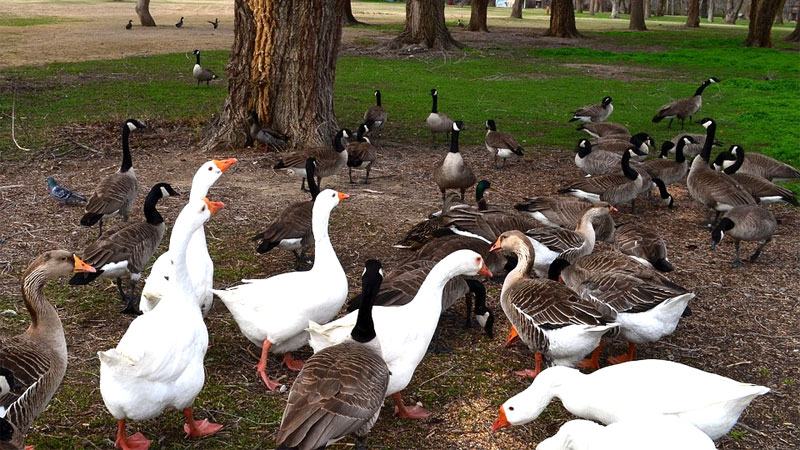

 Just tell me how to get rid of ’em.
Just tell me how to get rid of ’em.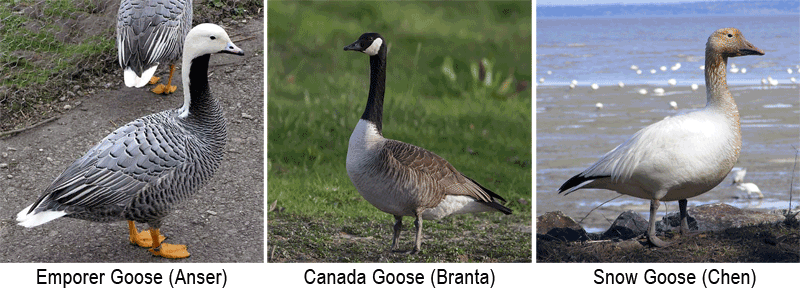
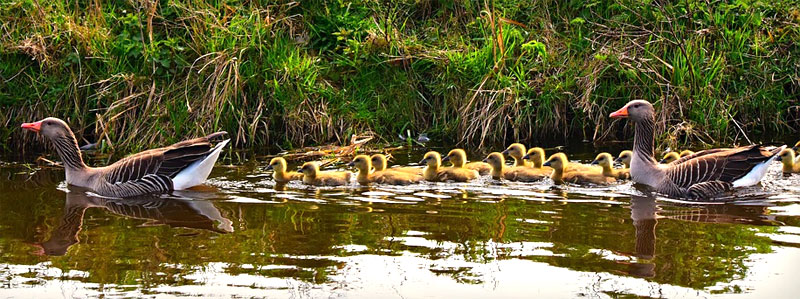
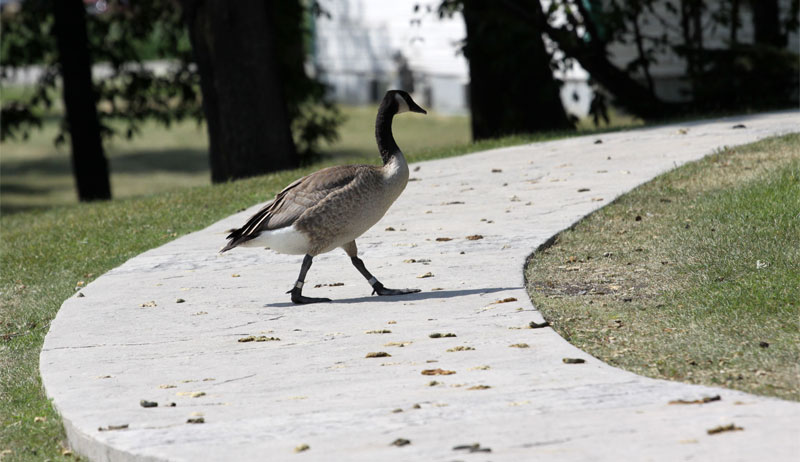
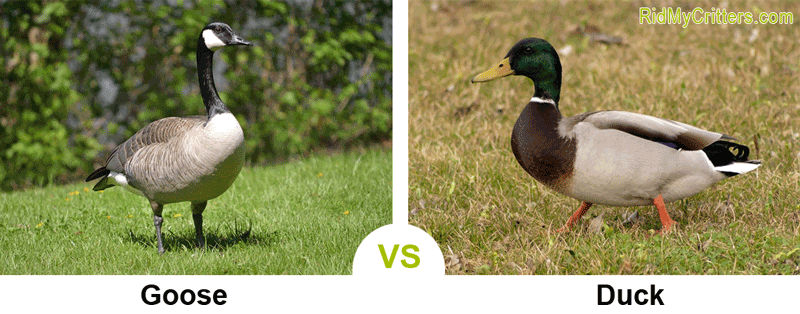
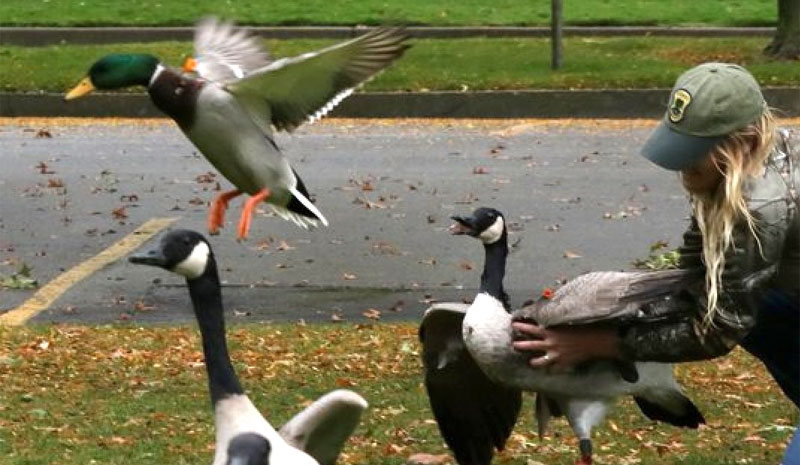
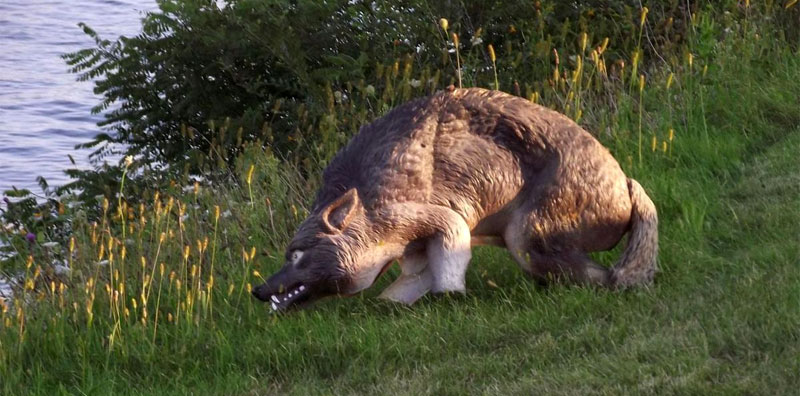
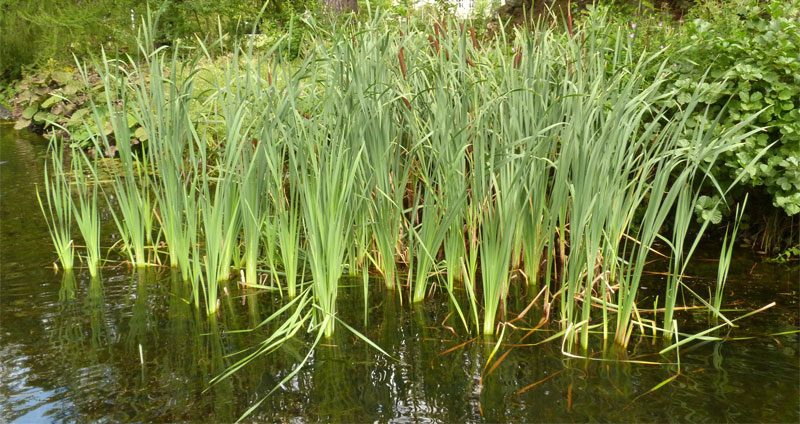
Green laser shown in their direction scares them away.